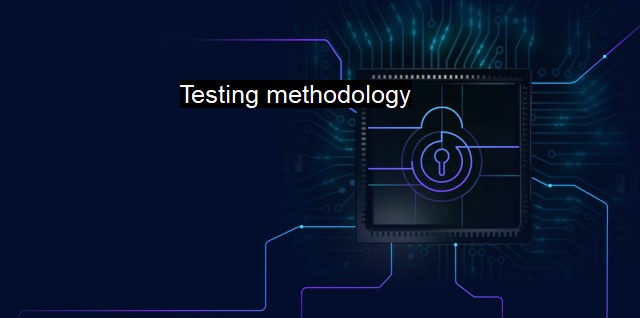What is Testing methodology?
Protecting Valuable Assets: Rigorous Testing Methodologies in Cybersecurity and Antivirus
Testing methodology in the context of cybersecurity and antivirus refers to the structural approach and process taken to validate and verify the robustness of a cybersecurity system or antivirus software. The methodology includes a range of checks, controls, procedures, and protocols to ensure that both the system and the antivirus software operate as they should, protecting data and digital systems from all sorts of threats, vulnerabilities and risks.A key focus in a testing methodology is accountability. Accountability, in this context, refers to the ability to trace elements of the software under test. It ensures that any threats or defects in a cyber security or antivirus software system can be primaly traced back to their source. This facilitates early mitigation and significantly reduces the potential for widespread damage.
Typically, a testing methodology encompasses several testing types or levels. These may include unit testing, system testing, integration testing and acceptance testing.
Unit testing measures how individual components of a cyber security system or part of an antivirus software function. This is critical for ensuring that each unit functions as designed and thus contributes to the overall efficiency and functionality of the system or software.
System testing, on the other hand, evaluates how the entire system performs as a whole. It involves running tests throughout the system to evaluate the final result. If the system is not able to reach its intended output or behave as expected, necessary changes and modifications are carried out.
Integration testing checks how the various components of a cybersecurity system or antivirus software function in relation. Its goal is to focus on the different interfaces to ensure seamless coordination between components.
Acceptance testing, also known as user acceptance testing, seeks to evaluate whether the system is ready for deployment. It aims to identify any issues that could affect user experience before the software or system goes live.
Despite having different types, an ideal testing methodology should be unique to every system or software to capture its nuances and requirements. For instance, in a testing methodology applied to antivirus software, one may incorporate aspects such as functionality testing, malware detection testing, and false-positive testing. for a cybersecurity system, the process may involve testing critical parameters such as intrusion detection, protocol analyses, encryption mechanisms, password cracking controls and firewalls.
Another vital part of testing methodology, specifically in antivirus software, is the use of malicious code. Using real viruses, trojan horses, worms, and other types of malware helps to test the effectiveness of the antivirus solution in a real-world scenario.
Test automation also plays a pivotal role in a testing methodology. This is because despite the best human efforts, labor-intensive and time-consuming testing can sometimes lead to human error. Test automation can provide accurate results faster, while reducing human intervention and risk, saving time and overall making the testing regiment more efficient.
Testing methodology provides the structure and framework that enables effective evaluation of the performance of cyber security systems and antivirus software. It consists of various testing types or levels, each designed to evaluate different aspects of the system or software, from individual functions to overall performance. The ultimate aim of a testing methodology is to provide assurance that the tested system or software is fit for purpose - a reliable stronghold against cyber threats. Whether testing antivirus software or cybersecurity systems, the demand for robust, reliable and foolproof testing methodologies is growing sky-high, given the present era of ever-emerging cyber threats.

Testing methodology FAQs
What is testing methodology in cybersecurity and antivirus context?
Testing methodology in cybersecurity and antivirus context refers to the process of testing the security of the system or software by applying various methods and techniques to ensure that it is resilient against cyber attacks and virus infections. The testing methodology includes several stages such as planning, execution, and reporting.What are the types of testing methodology in cybersecurity and antivirus context?
There are various types of testing methodology used in cybersecurity and antivirus context such as penetration testing, vulnerability scanning, malware analysis, and code review. These methodologies help in identifying and mitigating potential security risks and vulnerabilities in the system or software.What is the importance of testing methodology in cybersecurity and antivirus context?
Testing methodology in cybersecurity and antivirus context is crucial as it helps in identifying and mitigating potential security risks and vulnerabilities before they can be exploited by cybercriminals. This helps in ensuring that the system or software is robust and resilient against cyber attacks and virus infections. Testing methodology also ensures that the system or software meets the security standards and regulatory requirements.What are the best practices in testing methodology for cybersecurity and antivirus?
The best practices in testing methodology for cybersecurity and antivirus include having a clear testing strategy, using the latest tools and techniques, conducting regular testing, involving different testing methods and techniques, and having a skilled and experienced testing team. It's also essential to create a detailed report on the testing results, identify the vulnerabilities, and provide recommendations for fixing them.| | A | | | B | | | C | | | D | | | E | | | F | | | G | | | H | | | I | | | J | | | K | | | L | | | M | |
| | N | | | O | | | P | | | Q | | | R | | | S | | | T | | | U | | | V | | | W | | | X | | | Y | | | Z | |
| | 1 | | | 2 | | | 3 | | | 4 | | | 7 | | | 8 | | |||||||